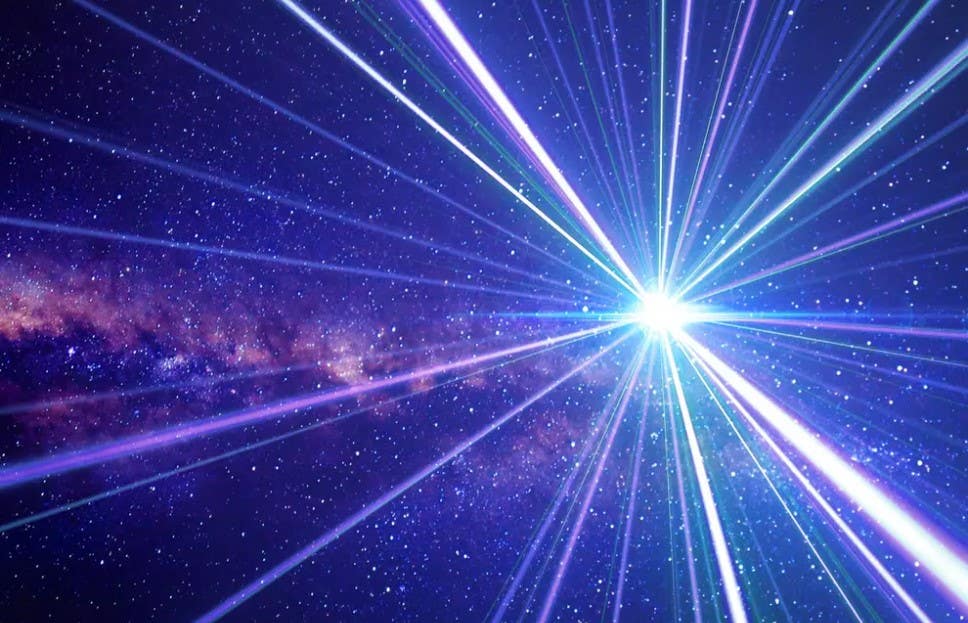Physicists believe that warp drive may soon become reality
Einstein’s theory of relativity seems to present a significant hurdle, stating that nothing can surpass the speed of light.

[June 4, 2023: Staff Writer, The Brighter Side of News]
Warp drive was the very first theory proposed in Star Trek, allowing it to travel faster than light across the galaxy. (CREDIT: Creative Commons)
Ever since Star Trek first graced television screens, the groundbreaking science fiction series has left viewers with a cosmic curiosity and thousands of scientific questions begging to be explored. Intriguingly, this iconic series has woven the fabric of actual scientific concepts into its fantastical narratives for decades, catalyzing a multitude of advancements in the technology we utilize every day.
Among the pantheon of intriguing concepts presented in Star Trek, one futuristic idea stood out: warp drive.
This theoretical mode of faster-than-light (FTL) travel through the cosmos, while a bedrock of the show's mythos, inherently challenges our contemporary understanding of Einstein's Theory of Relativity, which firmly posits the inviolability of the cosmic speed limit - the speed of light.
A ring-shaped warp drive device could transport a football-shape starship (center) to effective speeds faster than light. The concept was first proposed by Mexican physicist Miguel Alcubierre. (CREDIT: Harold White)
Related Stories:
This theory, which captured imaginations globally, did not remain confined within the realm of fiction. Miguel Alcubierre, a theoretical physicist, proposed the 'Alcubierre drive' in 1994, a concept grounded in the elasticity of space-time. This innovative theory proposed the creation of a 'bubble' in space-time, effectively bending reality to enable long-distance travel within this bubble.
The Alcubierre Warp Drive Model. The blue area below the plane represents contracted space while red and raised area represent expanded space. (CREDIT: Harold White)
While theoretically sound to many, skepticism abounded about the practical feasibility of Alcubierre's warp drive. However, Joseph Agnew, an undergraduate student at the University of Alabama, decided to challenge the doubt. "Mathematically, if you fulfill all the energy requirements, they can't prove that it doesn't work," asserts Agnew. He further elaborates on the concept: "Suppose you have a craft that's in the bubble. What you would do is, you'd compress space-time ahead of the craft and expand space-time behind it."
However, Einstein's theory of relativity seems to present a significant hurdle, stating that nothing can surpass the speed of light. Consequently, the faster an object moves, the more its mass increases, making acceleration increasingly challenging. In essence, reaching the speed of light appears fundamentally impossible.
Warp drive, to many, represents the holy grail of space exploration. By enabling FTL travel, this technology could theoretically allow humans to reach any corner of the cosmos at will. However, in light of Einstein's Theory of Relativity, the plausibility of such a concept appears highly contentious.
Science fiction writers have tantalized us with portrayals of interstellar travel, but the notion of reaching light-speed appears absurd. The impossibility stems from the immense amount of energy required to accelerate an object to light speed. However, this barrier does not necessarily mean that we cannot explore other pathways to the same end.
Therein lies the essence of the Alcubierre warp drive. Instead of challenging the speed of light, Alcubierre's concept circumvents this cosmic speed limit by distorting space-time. According to the theory, the spacecraft would exist within a 'warp bubble', encircled by a ring of negative mass.
This arrangement would enable the spaceship to traverse vast distances at speeds far exceeding that of light. Yet, within the bubble, the spacecraft would still comply with the universal speed limit, preserving the principles of general relativity.
The crux of the issue with Alcubierre's proposal, however, lies in its enormous mass-energy requirements. To generate a functioning warp drive, a mass equivalent to Jupiter would be necessary. Given Einstein's equation, E=mc2, the energy requirement appears astronomical, potentially exceeding what the universe itself could provide.
Star ship Enterprise traveling at warp speed. (CREDIT: Star Trek)
Nevertheless, Dr. Harold 'Sonny' White, a NASA mechanical engineer and physicist, is striving to address this seemingly insurmountable challenge. White suggests that by subtly tweaking the laws of physics, we might significantly reduce the mass-energy requirement stipulated in Alcubierre's theory. His research has hinted at the possibility of altering the shape of the negative mass ring, potentially bringing the mass requirement down to a more manageable 700kg.
Currently, White is spearheading a team of esteemed physicists and engineers at NASA, working on the White-Juday Warp Field Interferometer. This innovative piece of equipment is a beam-splitting interferometer capable of detecting and producing the smallest warp bubbles. Though this may not immediately enable a trip to the Andromeda Galaxy, it represents a significant stride towards the realization of functional warp drive technology.
Admittedly, the realization of interstellar travel and functional warp drives is still a distant horizon. However, in the ever-accelerating arena of technological advancement, the answers to these cosmic questions may be closer than we imagine. Who knows? Perhaps Star Trek's prediction of a functional warp drive by 2063 may not be as fantastical as it initially appears.
Note: Materials provided above by The Brighter Side of News. Content may be edited for style and length.
Like these kind of feel good stories? Get the Brighter Side of News' newsletter.
Joseph Shavit
Head Science News Writer | Communicating Innovation & Discovery
Based in Los Angeles, Joseph Shavit is an accomplished science journalist, head science news writer and co-founder at The Brighter Side of News, where he translates cutting-edge discoveries into compelling stories for a broad audience. With a strong background spanning science, business, product management, media leadership, and entrepreneurship, Joseph brings a unique perspective to science communication. His expertise allows him to uncover the intersection of technological advancements and market potential, shedding light on how groundbreaking research evolves into transformative products and industries.



